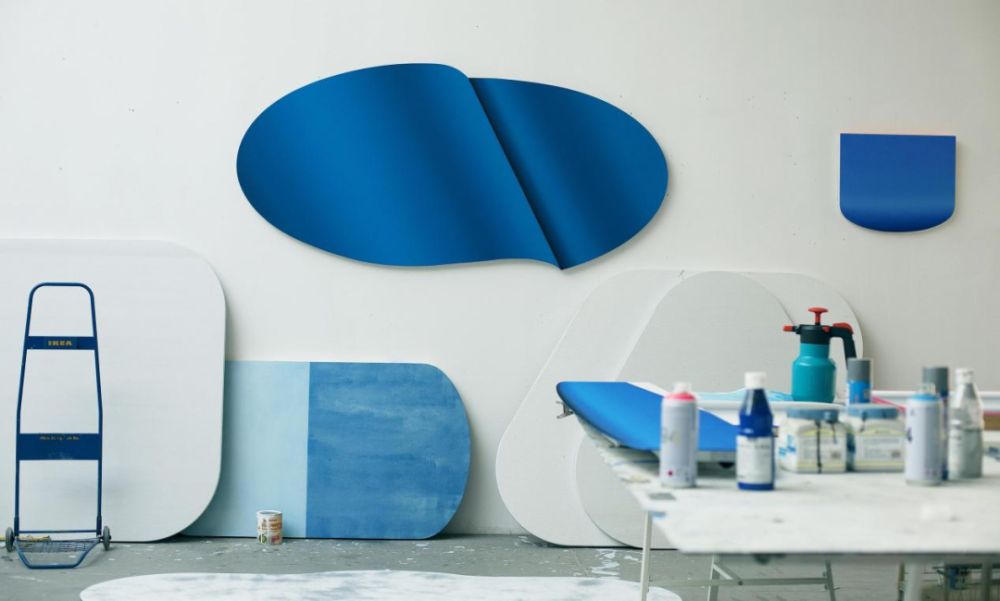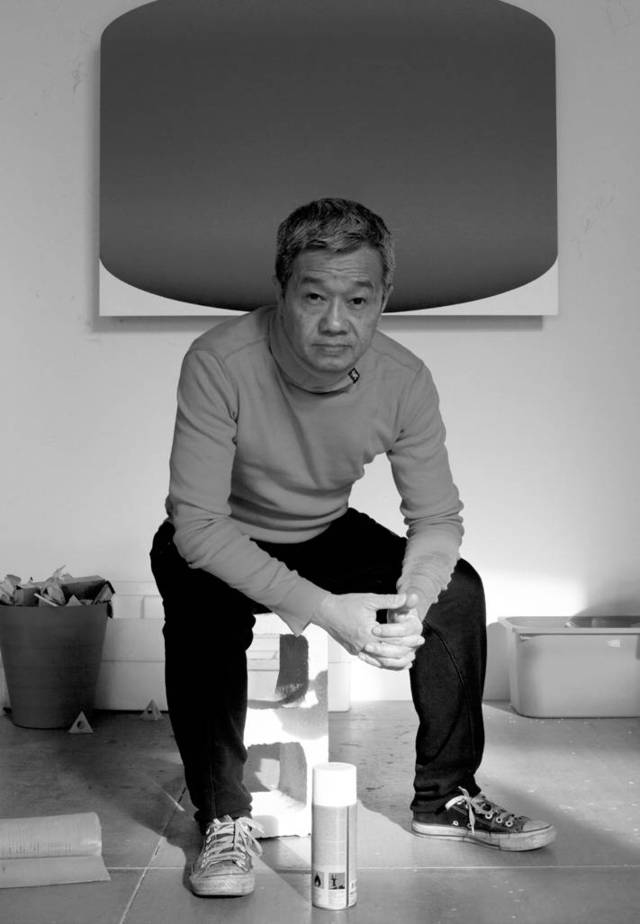Gallery Network
7 Questions for Chen Wenji, Whose Varied Work Is the Result of Constant and Ongoing ‘Self-Accumulation’
As he prepares for his next show with Aye Gallery, Beijing, the artist reflects on his processes and trajectory.

As he prepares for his next show with Aye Gallery, Beijing, the artist reflects on his processes and trajectory.

Artnet Gallery Network

Chinese artist Chen Wenji (b. 1954) utilizes his own artistic vernacular that can be understood as a synthesis—and distillation—of the many facets of abstraction. Though in his early career he worked largely in the medium of printmaking, the majority of Wenji’s oeuvre is comprised of oil paintings that border on sculpture, and the exploration of space, how it is perceived and interacted with, is a recurring theme in his work. Over the course of his career as an artist, he has continually pushed the boundaries of his work’s spatial relevance by using color, shape, and orientation to engage with the third dimension.
Currently represented by Aye Gallery, Beijing, we reached out to Wenji to learn more about his creative process, thoughts on abstraction, and what it actually means to have your work influenced by other artists and art movements.

Chen Wenji’s studio. Courtesy of Aye Gallery, Beijing.
What was your experience like at the start of your career, as both an artist and a teacher?
In the early stage of my art career at university, I was lucky enough to have both a major and a profession. I still think I am not cut out to be a teacher; but then again, it gives me the freedom to think about my own problems within the realm of art. In the process of teaching, I am never perfunctory, and always take an earnest attitude toward students. From the perspective of professional understanding, it is worthwhile to communicate sincerely with students.
I am constantly thinking about accumulation in my creative understanding. The accumulation will naturally have an effect over time, and society will give one the space one deserves, and this space, in turn, has the desire to further improve and accumulate oneself. It’s an endless cycle, an ecological, rational existence of its own.
Can you tell us about your creative process? Are your works fully planned out or is it more intuitive and improvised? What are some of the most important tools you keep in your studio?
My brain is restless, and the process of thinking never ceases. I’m constantly contemplating, even when I’m doing nothing. I often have presuppositions for my artistic expression, but not always. The expectation of not having concrete results has been quite stimulating, and it has kept me in a state of uncertainty as I’ve tried to move forward in my actions. All personal reactions in this process will affect my original intention. Modifying the original plan is also a kind of self-questioning, but challenging and motivating nonetheless. These processes allow me to be fully engaged and I often get lost in them.
Ever since I started to use oil painting as a creative medium, the tools I relied on at each stage have been related to the painting language at that time. However, constant evolution has also made my requirements for tools not absolutely fixed. So, it’s hard to say which tool is the most essential. However, I have been painting with a sponge roller for more than two decades.
Over the course of your career, your work has evolved significantly, and explored everything from figuration to abstraction, as well as real and perceived space. What are your guiding principles as an artist? Do you think there is a common thematic thread throughout your oeuvre?
In my own artistic operation, I have never stopped doubting myself and establishing myself. There is no absolute fixed consciousness or limit within the infinite expansion of the language of art. It also requires sensitivity and self-restraint, as well as balanced self-discipline. All these things will eventually come together to think about one’s own attitude towards life, which may be the ultimate subject one seeks to face in their artistic practice.

Artist Chen Wenji. Courtesy of Aye Gallery, Beijing.
Your work frequently engages with both Eastern and Western ideas and aesthetics. What is your view on the similarities and differences between these approaches, and how is this reflected in your work?
We are bombarded with all kinds of information and knowledge, which affect our direction of thinking all the time. I have also been entangled with these influences along the way. I may not care much about the direct influence of Eastern and Western cultures on me, but I often experience and learn the exciting parts of both cultures. In the end, I chose the part which was closer to me and easier to navigate. My Minimalist style, for example, is not so much the product of a fixed mindset, but rather a helpless, simple approach to gradually eliminate my limitations. Sometimes, the process of artistic thinking is also a process of judging and choosing one’s own existence. Self-positioning is a quest in life.
You graduated from the Central Academy of Fine Arts in 1978, and of course the world and the art scene have changed and evolved significantly over the years. Do you have any observations, for better or worse, on what it is like being a working artist today versus back then?
I won’t comment on the professionalization of art, because the boundary between art and social survival is not black or white. It has never occurred to me to think about the existence of this identity as a professional artist. Every successful artist I meet is striving to accomplish his or her own being. Each of them has their own reasons for their life experiences. But I can definitely speak for myself. Since retiring from teaching, I can now finish my own art without any scruples. In other words, I can now try to get closer to myself, instead of trying to cater to a certain occupation or identity.
Which artists or art movements that have influenced your work the most?
I am keen on understanding and studying the products of the Industrial Age. Therefore, I pay close attention to the rising trend of artistic thought in Europe at the beginning of the last century. The expressions of the Surrealist René Magritte, the Supremacist Kazimir Malevich, and Piet Mondrian also have a direct impact on me. It can be said that my thinking consciousness is still in the stage of Modernism. I am also fascinated with Yan Zhenqing’s calligraphy and Ni Zan’s landscapes. There are also paintings by Alberto Giacometti and Frank Auerbach, as well as the typological photography of Bernd and Hilla Becher and the Conceptual artistic expression of On Kawara. These artists’ works convey their personal spiritual values, unique artistic language forms, and aesthetic positions. It is difficult to determine what factors are directly related to my personal artistic language. However, it is undeniable that these artists have influenced me.
Can you tell us a bit about what you are currently working on? Are there any new influences or points of inspiration that you’re engaging with or plan to?
I am currently working with Aye Gallery on an exhibition project early next year. This is the seventh solo exhibition project between me and the gallery in the past 17 years. I hope this exhibition can be different from the past in terms of visual and sensory experience, and that’s all.
Learn more about Chen Wenji at Aye Gallery, Beijing, here.